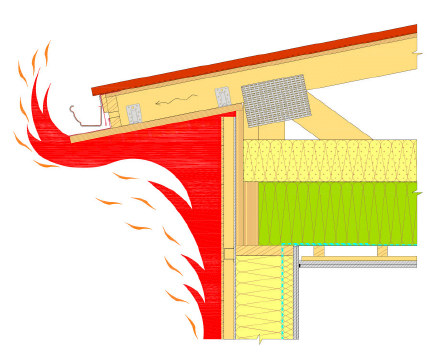The fire safety of wood structures
Wood is a combustible but, at the same time, fire-safe material. In a fire, wood chars evenly at a speed of about 1 mm per minute, so its load resistance and liability to collapse in a fire situation can be accurately predicted. This helps the work of rescue services, amongst others.

With wood structures, fire-resistance periods of 30, 60, 90 and 120 minutes can be achieved comparatively easily. The required structural fire-resistance period is achieved with structural protective cladding – usually plaster board – and also by giving wood structures added size to take charring into account. In a fire, the absorbed moisture in a plaster board evaporates, keeping the board’s temperature low on the side opposite the fire, which prevents the wood from igniting. Cavities in the structure can be filled with non-combustible insulation material, which protects the wood structures and slows down the charring of the wood.
In addition to structural fire protection, wooden buildings can be equipped with an automatic extinguishing system using sprinklers. The most popular type of system for wooden buildings is high-pressure water mist sprinkling (Hi-Fog). When it is set off, it does not spray water but a water mist, which effectively suppresses the fire. The system wets the structures. Unlike water, it operates in three dimensions so can even put out fire under a table, for example, where water could not have reached.